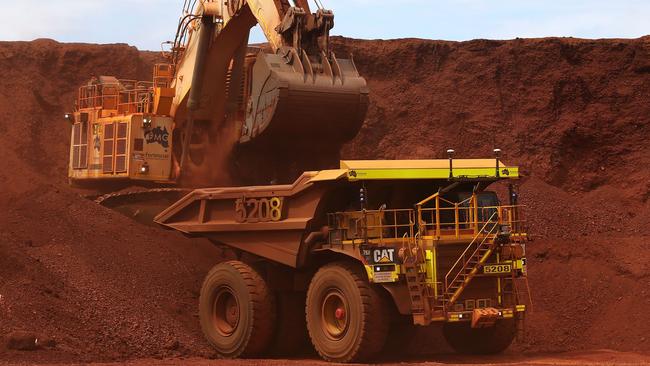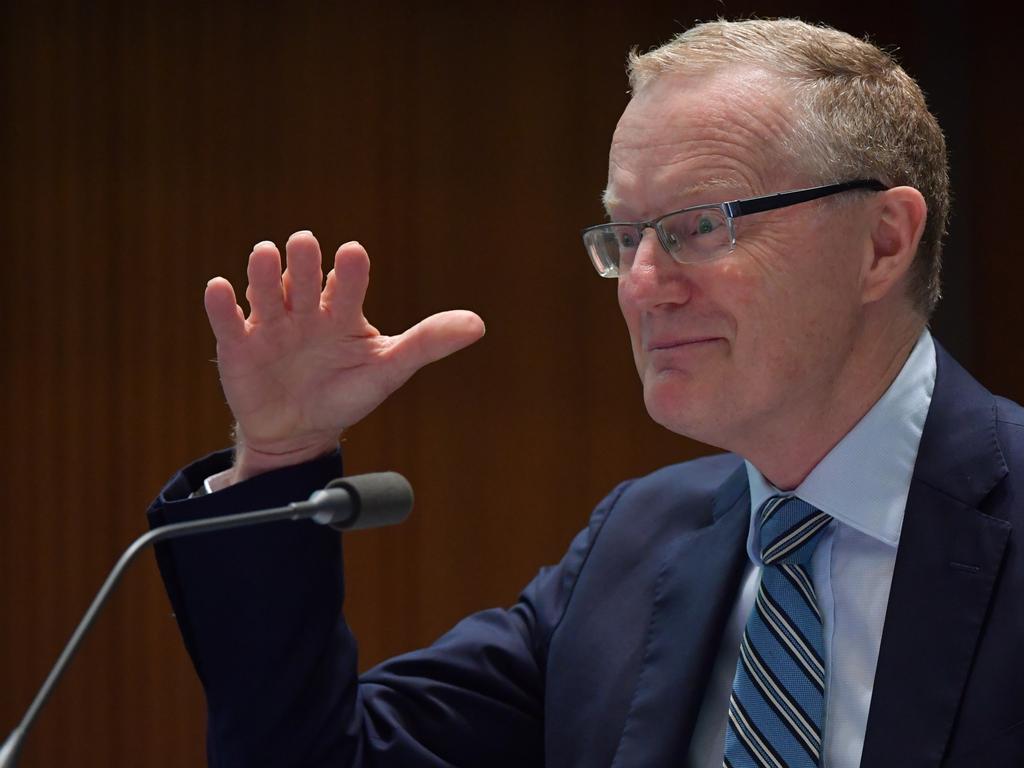Surplus in sight as iron ore boosts budget
Booming iron ore prices and a strong jobs market mean the May 11 budget could project a return to surplus within three years.

Booming iron ore prices and a strong jobs market have improved Australia’s economic performance to the point where the May 11 budget could project a return to surplus within three years even with additional fiscal stimulus, top economists say.
The renewed economic boost is expected to slice $50bn off the deficit for the 2020-21 financial year, with the budget deficit as of February already $23bn less than forecast in the government’s Mid-Year Fiscal and Economic Outlook last December.
The comments by UBS Australia chief economist George Tharenou come as the spot price of iron ore — Australia’s largest export — has surged to a decade high above $US186 a tonne.
This is expected to deliver a revenue windfall for Canberra, which had previously forecast iron ore would fall sharply to about $US60 a tonne this year.
Dalian iron ore futures on Monday added another 5 per cent, trading near $US190 a tonne, buoyed by strength in the Chinese economy.
Mr Tharenou expects a $35bn cut in the budget deficit for 2020-21, which will come in at $163bn, against the MYEFO projection of a $198bn deficit, as the government keeps conservative economic forecasts and announces new policies.
Still, a potential deficit of 8 per cent of GDP compared to 10 per cent forecast by Treasury in December would give a “much better starting point” for the budget.
Mr Tharenou now expects a $58bn deficit for 2021-22 versus a MYEFO projection of $108bn, representing just 2.7 per cent of GDP, versus 5.3 per cent projected in the MYEFO.
“Indeed, the employment-to-population ratio rebounded to near a record high, business profits recovered, and asset prices have boomed, suggesting limited ‘structural scarring’ on the budget from COVID,” he said.
“It’s plausible the budget will project a return to balance in 2024-25 — as occurred in 2018-19 before COVID hit — with a cumulative improvement of $200bn across the profile.”
Even so, CBA interest rate strategist Phil Brown warned that Australia’s rolled-gold “triple A” credit rating was “on a knife‑edge” and would remain a “judgment call” before and after the budget.
Any rating downgrade could increase Australia’s borrowing costs, and even a marginal borrowing cost increase could have a significant impact given high debt levels, he said.
“The first judgment call is that (S&P) have deemed the coronavirus pandemic an extraordinary event and are essentially ignoring the short-term damage done to the balance sheet,” Mr Brown said.
“The second judgment call is that S&P have given Australia a small ratings uplift because they deem the Australian government to have ‘greater ability to increase general government revenues in the short‑term’ than peers. S&P point to the budget repair levy and the major bank levy as examples.”

He warned that this was “more consequential” because it applied to the long-term outlook.
“If Australia was to lose their uplift for being able to raise revenue, then the methodology would suggest a AA+ rating, not a AAA rating,” he said.
But a “materially stronger-than-expected economy and labour market” was helping the budget thanks to a much faster than expected fall in recipients of JobKeeper and JobSeeker as the employment market surged amid strong growth in the mining and housing industries, he said.
A stronger-than-expected global economy had also made a major positive contribution.
Mr Tharenou expects total new stimulus in the budget in the order of $20bn or 1 per cent of GDP.
“Channel checks indicate the budget strategy — of consolidation versus stimulus — is unclear, albeit a full focus on budget repair is now unlikely until unemployment falls to 5.25 per cent,” he said.
“However, channel checks confirm an extension of the low-and-middle-income tax offset for about 10 million people with incomes up to $90,000 a year — worth up to $1080 a year — costing $7bn.”
More spending on child and aged care, infrastructure, defence, climate change, as well as superannuation payments, government-funded parental leave and an expected axing of the $450-a-month income exemption before superannuation is paid is likely and a lift in thresholds for the first-home buyer scheme is also in the mix, according to Mr Tharenou. So while the Reserve Bank may be reluctant to taper its bond buying before the Fed does due the exchange rate implications, “the argument for more easing is weakening”, Mr Tharenou said.
His budget view points to a “material reduction” in required Australian government debt issuance of at least $75bn over the next two financial years.
“With the RBA committed to ‘QE 2.0’ of another $100bn until about August — unless they taper thereafter — they will buy far in excess of issuance, and by end-2021 own closer to half of Australian government securities,” he said.
“We think the economic argument to extend yield curve control to November 2024 from the current April 2024 line has materially weakened (but) the RBA is still likely to hold the cash rate over our forecast profile, to at least the end of 2022.”
The Bank of Canada last week reduced the pace of bond purchases and said it could start lifting interest rates six month earlier than previously planned.
According to CommSec’s quarterly “State of the States” report released on Tuesday, the gap between the economic performance between the states and territories “continues to narrow”.
For the fifth quarter in a row, Tasmania held the mantle of the best performing economy and the ACT remains in second spot, relative to the average of their economic performances over the past decade, but there was little to separate five of the other seven state and territory economies.








To join the conversation, please log in. Don't have an account? Register
Join the conversation, you are commenting as Logout